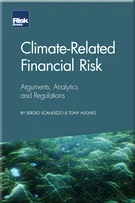Introduction
Introduction
Foreword
Introduction
Theory and Practice of Corporate Risk Management
Theory and Practice of Optimal Capital Structure
Introduction to Funding and Capital Structure
How to Obtain a Credit Rating
Refinancing Risk and Optimal Debt Maturity
Optimal Cash Position
Optimal Leverage
Introduction to Interest Rate and Inflation Risks
How to Develop an Interest Rate Risk Management Policy
How to Improve Your Fixed-Floating Mix and Duration
Interest Rates: The Most Efficient Hedging Product
Do You Need Inflation-linked Debt?
Prehedging Interest Rate Risk
Pension Fund Asset and Liability Management
Introduction to Currency Risk
How to Develop Currency Risk Management Policy
Translation or Transaction: Netting Currency Risks
Early Warning Signals
How to Hedge High Carry Currencies
Currency Risk on Covenants
Optimal Currency Composition of Debt 1: Protect Book Value
Optimal Currency Composition of Debt 2: Protect Leverage
Cyclicality of Currencies and Use of Options to Manage Credit Utilisation
Managing the Depegging Risk
Currency Risk in Luxury Goods
Introduction to Credit Risk
Counterparty Risk Methodology
Counterparty Risk Protection
Optimal Deposit Composition
Prehedging Credit Risk
xVA Optimisation
Introduction to M&A-related Risks
Risk Management for M&A
Deal-contingent Hedging
Introduction to Commodity Risk
Managing Commodity-linked Revenues and Currency Risk
Managing Commodity-linked Costs and Currency Risk
Commodity Input and Resulting Currency Risk
Offsetting Carbon Emissions
Introduction to Equity Risk
Hedging Dilution Risk
Hedging Deferred Compensation
Stake-building
WHAT HAS CHANGED IN THE SECOND EDITION
There are two main reasons that made us think about writing a second edition. Since the first edition of this book was published in 2012, much has changed in the world of corporate risk: the macroeconomic situation, for instance, due to low interest rates in the eurozone and higher rates in the US. Has this changed our view on the optimal fixed-floating mix? We decided to find out.
We also received many comments from our readers about parts of the first edition that could be expanded or clarified. For example, xVA charges, introduced after 2008 became a major consideration for long-dated derivatives, but there was no mention of them in the first edition. This omission has now been rectified.
We have added new chapters on equity risks, carbon emissions, risks from pegged currencies, optimal cash position and optimal leverage, and many others, 20 chapters in total. We also eliminated 12 chapters that do not seem relevant today. Other chapters have been radically rewritten and expanded for easier comprehension and completeness. Therefore, the book you now hold is much bigger and very different than the first edition.
WHAT HAS NOT
Copyright Infopro Digital Limited. All rights reserved.
As outlined in our terms and conditions, https://www.infopro-digital.com/terms-and-conditions/subscriptions/ (point 2.4), printing is limited to a single copy.
If you would like to purchase additional rights please email info@risk.net
Copyright Infopro Digital Limited. All rights reserved.
You may share this content using our article tools. As outlined in our terms and conditions, https://www.infopro-digital.com/terms-and-conditions/subscriptions/ (clause 2.4), an Authorised User may only make one copy of the materials for their own personal use. You must also comply with the restrictions in clause 2.5.
If you would like to purchase additional rights please email info@risk.net









